Increase in frequency of myeloid-derived suppressor cells in mice with spontaneous pancreatic carcinoma
- PMID: 19689743
- PMCID: PMC2747147
- DOI: 10.1111/j.1365-2567.2009.03105.x
Increase in frequency of myeloid-derived suppressor cells in mice with spontaneous pancreatic carcinoma
Abstract
Pancreatic adenocarcinoma is one of the deadliest cancers with poor survival and limited treatment options. Immunotherapy is an attractive option for this cancer that needs to be further developed. Tumours have evolved a variety of mechanisms to suppress host immune responses. Understanding these responses is central in developing immunotherapy protocols. The aim of this study was to investigate potential immune suppressor mechanisms that might occur during development of pancreatic tumours. Myeloid-derived suppressor cells (MDSC) from mice with spontaneous pancreatic tumours, mice with premalignant lesions as well as wild-type mice were analysed. An increase in the frequency of MDSC early in tumour development was detected in lymph nodes, blood and pancreas of mice with premalignant lesions and increased further upon tumour progression. The MDSC from mice with pancreatic tumours have arginase activity and suppress T-cell responses, which represent the hallmark functions of these cells. Our study suggests that immune suppressor mechanisms generated by tumours exist as early as premalignant lesions and increase with tumour progression. These results highlight the importance of blocking these suppressor mechanisms early in the disease in developing immunotherapy protocols.
Figures

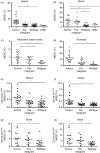
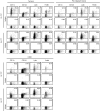

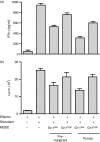
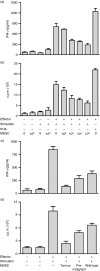
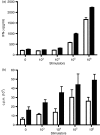
References
-
- Jemal A, Siegel R, Ward E, Hao Y, Xu J, Murray T, Thun MJ. Cancer Statistics, 2008. CA Cancer J Clin. 2008;58:71–96. - PubMed
-
- Laheru D, Jaffee EM. Immunotherapy for pancreatic cancer – science driving clinical progress. Nat Rev. 2005;5:459–67. - PubMed
-
- Garbe AI, Vermeer B, Gamrekelashvili J, et al. Genetically induced pancreatic adenocarcinoma is highly immunogenic and causes spontaneous tumor-specific immune responses. Cancer Res. 2006;66:508–16. - PubMed
-
- Wagner M, Luhrs H, Kloppel G, Adler G, Schmid RM. Malignant transformation of duct-like cells originating from acini in transforming growth factor transgenic mice. Gastroenterology. 1998;115:1254–62. - PubMed
Publication types
MeSH terms
Substances
LinkOut - more resources
Full Text Sources
Other Literature Sources
Medical
Molecular Biology Databases

